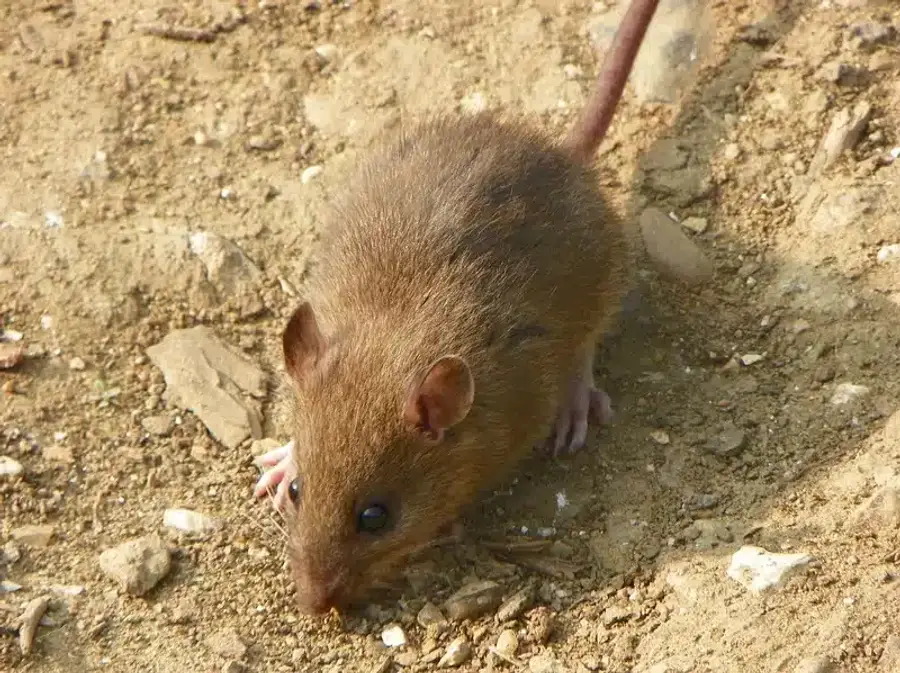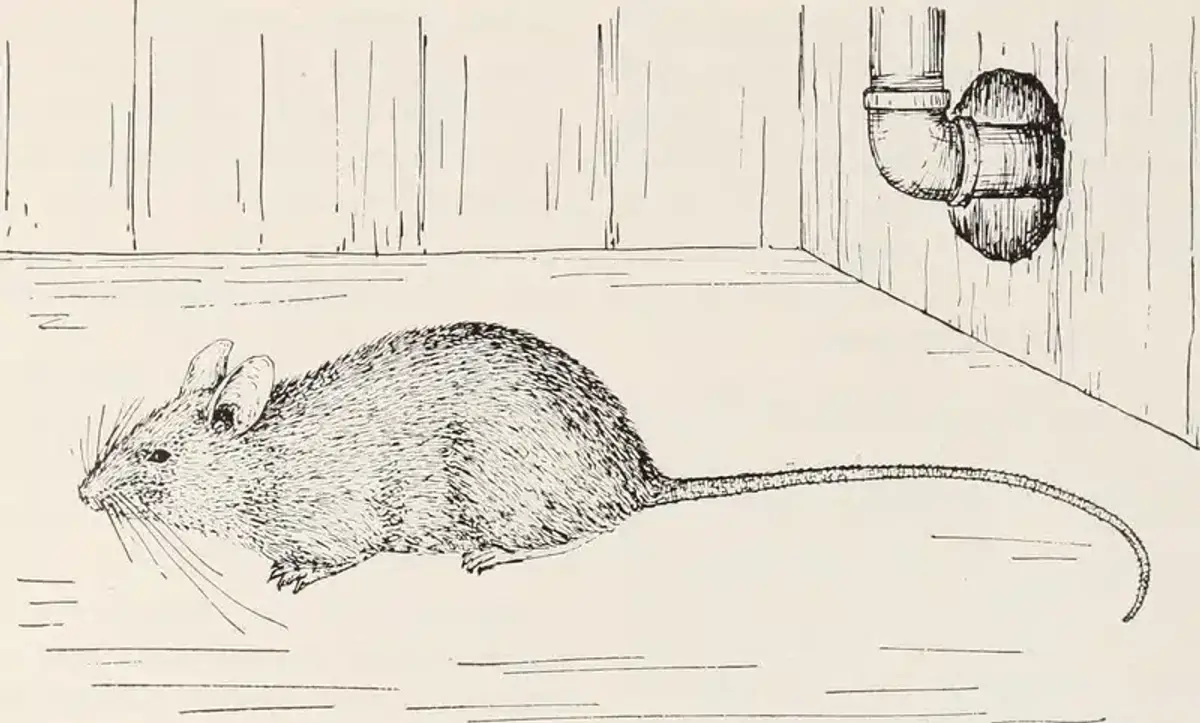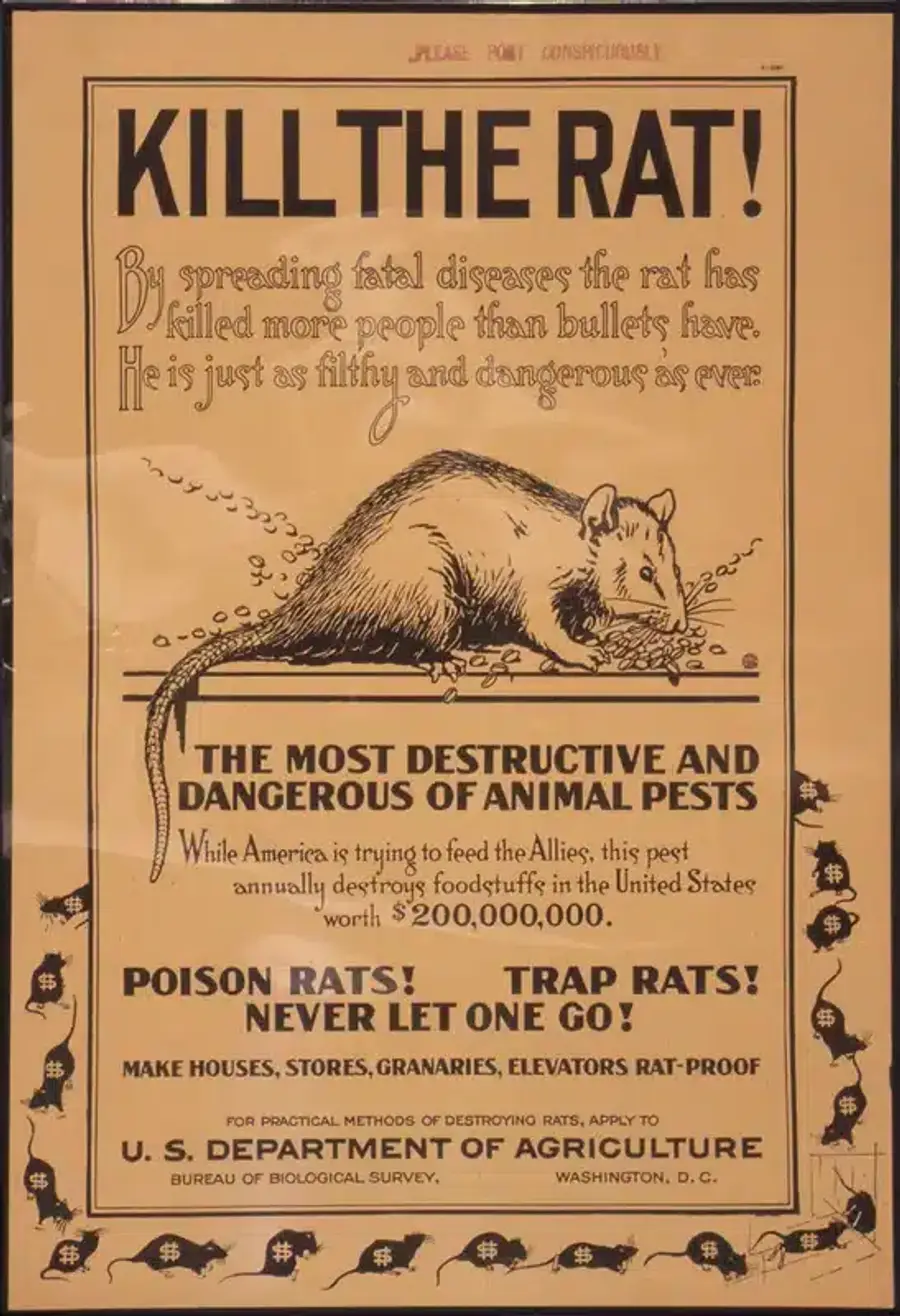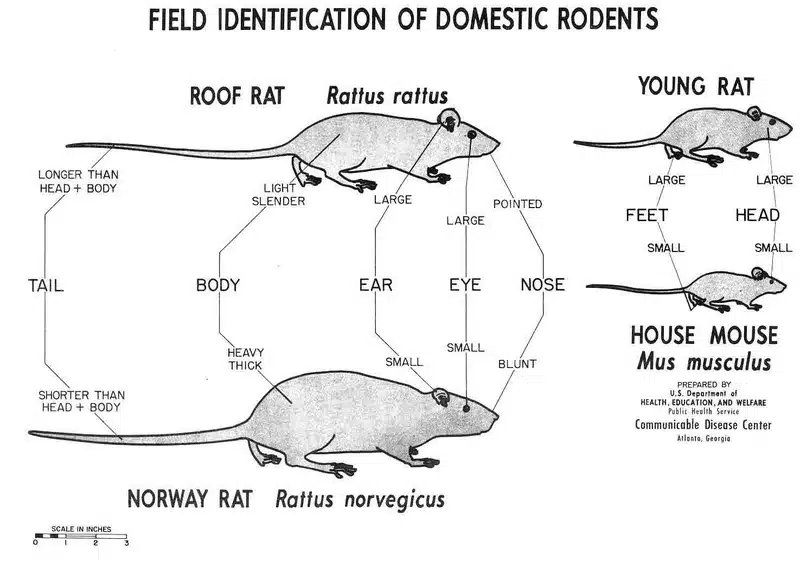When you hear scratching in the walls or find droppings in your kitchen, you’re dealing with a rodent problem. But knowing whether you have mice vs rats makes all the difference in how you tackle the issue. These two common pests require different treatment approaches, and getting it wrong means the problem persists.
After working as a licensed pest control technician since 2015, I’ve seen countless homeowners struggle with this exact question. Here in the DC metro area, especially in Old Town Alexandria, we get tons of calls about rodent issues. That’s exactly why we developed our four-step rodent protocol - because understanding the differences between mice vs rats is the foundation of effective treatment.
Understanding Mouse and Rat Differences: How to Identify Rats and Mice
Both mice and rats belong to the family Muridae, which includes commensal rodents that thrive alongside humans. In the Mid-Atlantic region, you’re most likely dealing with house mice, Norway rats, or roof rats. Each species has established itself in Virginia, Maryland, and DC because our temperate climate and dense housing provide year-round food and shelter.
The basic rule is simple: mice are curious little creatures that investigate new things, while rats are suspicious and avoid new objects for days. This behavioral difference alone changes how we approach treatment. For a detailed comparison of physical characteristics and habits, check out our guide on what are the differences between rats and mice.
Physical Characteristics of Mice vs Rats
Body Size and Weight
Mice measure just 2½ to 4 inches in body length, with their tail adding another 3-4 inches. They typically weigh around 15 grams - about half an ounce. Rats are much larger, with Norway rats reaching 7-10 inches in body length and roof rats measuring 6-8 inches.
Tail, Ears, and Snout
The tail tells the story. Mouse tails equal their body length and have light fur. Norway rat tails are shorter than their body and appear scaly with two distinct colors. Roof rat tails are longer than their body and uniformly dark.




Mouse ears are large and prominent on their pointed, triangular heads. Norway rats have small ears close to their blunt snouts. Roof rats fall somewhere in between with large, hairless ears.
Droppings and Entry Points
Mouse droppings measure ⅛ to ¼ inch with pointed ends. Norway rat droppings are ½ to ¾ inch with blunt ends. Roof rat droppings are about ½ inch and spindle-shaped.
Behavioral Differences: Is It a Rat or Mouse in Your Home?
Activity Patterns and Curiosity
Both are nocturnal, but their personalities differ dramatically. Mice investigate new objects immediately - if you set a trap, you’ll know within the first night whether it’s working. Rats exhibit neophobia, avoiding new objects for days or even weeks.
Home Range and Movement
Mice stick close to home with a range of 30 feet or less from their nest. Rats travel much farther - up to 300 feet from their nest site. This affects trap placement and monitoring strategies.
Reproduction and Population Growth
House mice reproduce faster with about 8 litters per year of 5-6 pups each. Norway rats have fewer litters (around 7) but larger ones with 12 pups. Both reach sexual maturity in 6-12 weeks, meaning populations explode quickly after mild winters.
Habitat Preferences: Mice vs Rats in the DC Metro
House Mouse Habitats
House mice nest inside walls, cabinets, and other enclosed spaces within your home. They prefer areas near food sources and don’t require much water. If you’re dealing with mice in rural areas, you might encounter deer mice, which have different habits and risks. Learn more about deer mice vs house mice differences to ensure proper identification.
Roof Rat Preferences
Roof rats live up to their name by nesting in attics, trees, and vines. They’re excellent climbers and often enter homes through roof lines. In our area, they particularly like overgrown vegetation that provides pathways to upper-level entry points.
Norway Rat Behavior
Norway rats are ground dwellers that burrow along foundations, in sewers, and around compost areas. They need ½ to 1 ounce of water daily, so they stick close to moisture sources.
Health Risks: Mice vs Rats
Serious Health Hazards
Both mice and rats pose significant health risks to your family. Rodent infestations require immediate attention to protect your household from disease transmission and allergens.
Disease Transmission by Mice
According to the CDC, house mice can transmit salmonellosis through contaminated food. More concerning are deer mice, which carry hantavirus pulmonary syndrome - a rare but often fatal disease transmitted through inhaling contaminated dust.
Disease Transmission by Rats
Rats pose different health risks. They can carry leptospirosis, which spreads through urine-contaminated water and can cause kidney and liver failure. Rat-bite fever spreads through bites or saliva contact.
Allergens and Asthma
Both mice and rats produce dander and urine proteins linked to pediatric asthma, particularly in urban environments like Baltimore and Washington. This makes quick identification and treatment especially important for families with children.
How to Get Rid of Mice and Rats: Effective Pest Treatment Approaches
Non-Chemical Controls
Exclusion remains the most effective long-term solution, but the materials differ. Use ¼-inch hardware cloth for mice and ½-inch galvanized mesh for rats. Focus on sealing gaps around pipes, dryer vents, and garage doors.

Sanitation works for both species but targets different behaviors. Store all food (including pet food and bird seed) in rodent-proof containers. For rats specifically, manage water sources and keep vegetation trimmed 2 feet from your home’s exterior.
Trapping Strategies for Mice vs Rats
Mouse trapping uses smaller snap traps or multiple-catch stations placed every 5-10 feet along walls. Bait with peanut butter mixed with oatmeal, chocolate, or even cotton for nesting material. Because mice are curious, results appear overnight.
Rat trapping requires larger snap traps or CO₂-powered kill traps spaced 15-20 feet apart. The key difference: pre-bait without setting the trap until you observe feeding. This overcomes their natural suspicion. For roof rats, place traps on ledges and rafters where they travel.
Chemical Treatments: Rodenticides
The EPA regulates household rodenticides and requires tamper-resistant bait stations for most products. First-generation anticoagulants like warfarin require multiple feedings. Second-generation products like brodifacoum work with one feeding but face increasing restrictions due to environmental concerns.
Bait station placement differs between species. Space mouse stations 8-12 feet apart. Rat stations can be up to 50 feet apart but must remain within that distance from structures.
Our Four-Step Rodent Protocol
Our Proven Treatment Process
Step 1: Complete Inspection - We identify hot spots by looking for droppings, gnaw marks, and actual sightings. We also check for food sources and harborage areas.
Step 2: Strategic Bait Station Placement - We place tamper-proof rodent stations near identified hot spots with baits specifically chosen for the target species.
Step 3: Early Follow-Up Visits - We return at 1 and 3 weeks to assess effectiveness and adjust strategies based on whether we’re dealing with mice or rats.
Step 4: Long-Term Maintenance - Quarterly visits to re-bait stations and monitor activity levels ensure lasting results.
Step 1: Complete Inspection
Every rodent job starts with a full home inspection. We identify hot spots by looking for droppings, gnaw marks, and actual sightings. We also check for food sources like dog food, pantry items, and bird seed, plus harborage areas with excessive clutter.
Step 2: Strategic Bait Station Placement
We place tamper-proof rodent stations near identified hot spot areas. The stations contain baits specifically chosen for the target species. Inside your home, we primarily use snap traps for rats to prevent odor issues from rats dying in walls.
Step 3: Early Follow-Up Visits
Follow-up timing depends on whether we’re dealing with mice vs rats. We typically return at 1 and 3 weeks to assess effectiveness and adjust strategies. This frequent monitoring ensures we’re getting results quickly.
Step 4: Long-Term Maintenance
The biggest failure point we see in our area is homeowners stopping treatment too early. Long-term success requires ongoing maintenance - usually quarterly visits to re-bait stations and monitor activity levels. Based on your specific situation and location, some homes need bimonthly or even monthly service.
Common Treatment Misconceptions
Attic Re-Insulation Requirements
One thing competitors often get wrong is telling homeowners they need complete attic re-insulation. In our experience, this is fairly rare and extremely expensive. Much of the attic work other companies propose isn’t actually that effective. The lower-level baiting approach typically provides better results at a fraction of the cost.
Snap Traps vs Exclusion Priority
Don't Seal Entry Points Too Early
Sealing holes before controlling the existing rodent population can trap rodents inside your home, creating bigger problems. Always focus on eliminating the current infestation first, then use exclusion as a long-term prevention strategy.
Many homeowners think sealing entry points is the primary control method. Actually, exclusion works better as a long-term proofing strategy after you’ve controlled the existing population.
Regional Focus: Old Town and DC Area
In Old Town Alexandria and DC, we see specific seasonal patterns. Roof rat complaints spike after autumn grain harvests in coastal Maryland counties. The historic row-house construction creates unique entry points where brick settles over time.



Our local expertise extends throughout the region. Whether you need rodent control in Reston, rodent control in Alexandria, pest control in Potomac, or Bethesda pest control, we understand the specific challenges each area presents.
If you’re dealing with mice in your attic specifically, our guide on mice in attic solutions provides targeted strategies for that challenging situation. For comprehensive prevention strategies, check out our ultimate guide to rodent control.
Professional vs DIY Treatment
While basic prevention measures work well as DIY projects, effective treatment of active infestations typically requires professional intervention. The key difference lies in product selection and application timing.
Our research team has reviewed thousands of studies to select products we’d feel comfortable using in our own homes. We’ve removed 9 products that are legally approved but didn’t meet our internal standards.
Understanding when you have mice vs rats determines everything from trap size to bait station spacing to follow-up timing. Getting these details right makes the difference between quick resolution and months of frustration.
For homeowners interested in different types of rats in our area or wondering about how long rats live, these factors influence treatment duration and maintenance schedules.
Frequently Asked Questions
How can I tell if I have mice vs rats in my attic?
+
The easiest way to distinguish mice vs rats in your attic is by examining droppings and listening to sounds. Mouse droppings are small (¼ inch) with pointed ends, while rat droppings are larger (½ inch) and blunt. Additionally, mice make light scratching sounds, whereas rats create heavier thumping noises as they move around.
What bait works best for mice vs rats?
+
Mouse baits should include peanut butter mixed with oatmeal, chocolate, or cotton for nesting material. Rat baits work better with protein sources like meat or nuts. The key difference is that mice will try new baits immediately, while rats require pre-baiting for several days before you set the trap to overcome their natural suspicion.
How long does it take to get rid of a rodent infestation?
+
Treatment timelines differ significantly for mice vs rats. Mouse populations typically respond within 1-2 weeks because they investigate traps immediately. Rat infestations take 3-6 weeks due to their cautious nature and larger territory. Factors like population size, food availability, and home construction affect these timelines.
Do I need to re-insulate my attic if I have rodents?
+
Complete attic re-insulation is rarely necessary for rodent problems. Most effective control happens at ground level through proper baiting and exclusion. We've found that many expensive attic treatments competitors recommend don't actually improve results. Focus first on controlling the active population, then address any damaged insulation in specific areas only.
Are DIY traps as effective as professional treatments?
+
DIY traps can work for small mouse problems, but professional treatment provides better results for several reasons. Proper trap placement, species-specific baiting strategies, and follow-up timing require experience. Additionally, professional-grade bait stations and products aren't available to consumers. The biggest advantage is knowing when you're dealing with mice vs rats and adjusting methods accordingly.
How often should I schedule rodent control visits?
+
Maintenance frequency depends on your location and infestation history. Most homes need quarterly visits after the initial control period. However, areas like Old Town Alexandria or homes with previous heavy infestations might require monthly or bimonthly service. We determine the right schedule based on your specific situation during our initial inspection.
Can I use the same treatment methods for mice vs rats?
+
While some basic principles apply to both, mice vs rats require different approaches. Trap sizes, bait types, placement strategies, and follow-up timing all vary between species. Using mouse-sized traps for rats or rat strategies for mice significantly reduces effectiveness. Proper identification determines the entire treatment protocol.
What should I do if I see both mice and rats?
+
Finding both mice and rats requires a comprehensive approach targeting each species separately. We use smaller stations and traps for mice in interior areas, while placing larger rat control devices along exterior walls and entry points. The treatment timeline extends because we must address each population's unique behaviors and preferences.
With five years of hands-on experience in the pest control industry, George Schulz is a registered technician with the Virginia Pest Management Association and a proud third-generation professional in a family business that's been protecting homes for over 57 years. He manages and trains a team of service pros while also leading internal research efforts—recently spearheading a deep-dive review of thousands of documents on pest control materials to hand-pick the most kid and pet friendly, most effective solutions tailored specifically for homes in the DC metro area.
